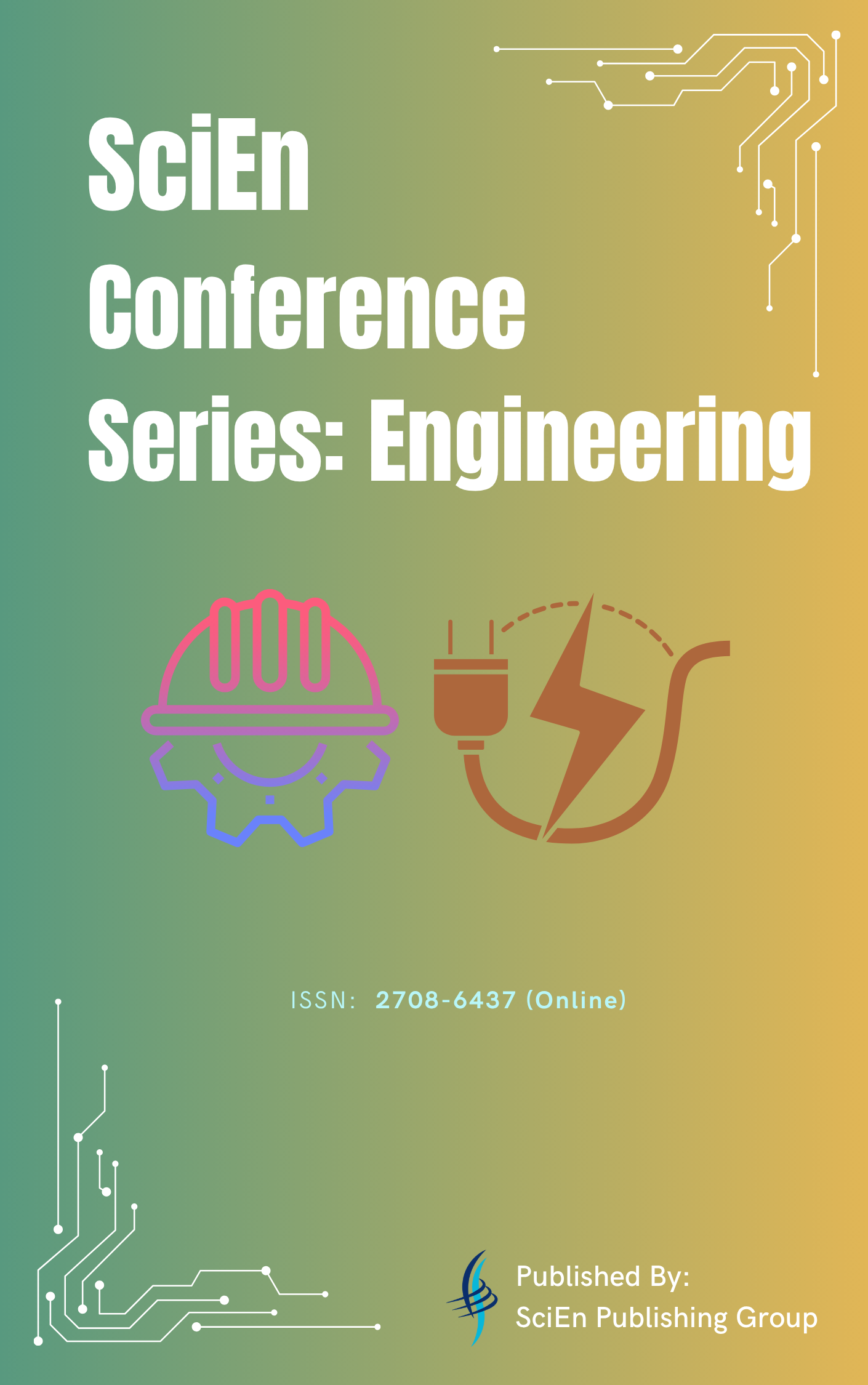Detection of Glaucoma using ORB (Oriented FAST and Rotated BRIEF) Feature Extraction
DOI:
https://doi.org/10.38032/jea.2021.03.005Keywords:
ORB, Glaucoma, Fundus, SIFT, PythonAbstract
This research was utilized to identify glaucoma, a type of eye illness. This endeavor necessitates the use of pictures from the fundus camera for image processing. This study reflects the effort done to detect glaucoma-affected eyes utilizing image feature extraction using Oriented FAST and Rotated BRIEF (ORB). ORB is a binary descriptor approach that is based on BRIEF and is highly fast. This technique is insensitive to picture noise and is invariant to any rotation. ORB is two orders of magnitude faster than SURF and performs similarly to SIFT. It is more efficient than other texture analysis methods. It is less computationally difficult than other approaches in the literature. This technique extracts features and detects texture by inspecting each pixel of the retina picture. It was trained on 160 fundus pictures of normal and glaucoma-affected retinas. After that, any healthy or glaucoma-affected eye may be easily recognized by obtaining an accurate eye picture. The results reveal that this technique has a precision and accuracy of more than 90%.
References
Banister, R., 1971. A treatise of one hundred and thirteene diseases of the eyes (No. 297). Theatrum Orbis Terrarum.
Rotchford, A., 2005. What is practical in glaucoma management?. Eye, 19(10), pp.1125-1132. DOI: https://doi.org/10.1038/sj.eye.6701972
www.sightsavers.org/protecting-sight/what-is glaucoma/ Accessed on 24.04.2021
Rahman, M.M., Rahman, N., Foster, P.J., Haque, Z., Zaman, A.U., Dineen, B. and Johnson, G.J., 2004. The prevalence of glaucoma in Bangladesh: a population based survey in Dhaka division. British Journal of Ophthalmology, 88(12), pp.1493-1497. DOI: https://doi.org/10.1136/bjo.2004.043612
Katz, J., Sommer, A., Gaasterland, D.E. and Anderson, D.R., 1991. Comparison of analytic algorithms for detecting glaucomatous visual field loss. Archives of Ophthalmology, 109(12), pp.1684-1689. DOI: https://doi.org/10.1001/archopht.1991.01080120068028
Rublee, E., Rabaud, V., Konolige, K. and Bradski, G., 2011, November. ORB: An efficient alternative to SIFT or SURF. In 2011 International Conference on Computer Vision (pp. 2564-2571). IEEE. DOI: https://doi.org/10.1109/ICCV.2011.6126544
Laios, K., Moschos, M.M. and Androutsos, G., 2016. Glaucoma and the origins of its name. Journal of Glaucoma, 25(5), pp.e507-e508. DOI: https://doi.org/10.1097/IJG.0000000000000373
Krupen, T., 1997. Autonomic drugs: controlling the inflow. van Buskirk EM, Shields MB, eds, 100, pp.262-71.
Johnson, C.A., Adams, A.J., Casson, E.J. and Brandt, J.D., 1993. Blue-on-yellow perimetry can predict the development of glaucomatous visual field loss. Archives of Ophthalmology, 111(5), pp.645-650. DOI: https://doi.org/10.1001/archopht.1993.01090050079034
Jonas, J.B., Gusek, G.C. and Naumann, G.O., 1988. Optic disc morphometry in chronic primary open-angle glaucoma. Graefe's Srchive for Clinical and Experimental Ophthalmology, 226(6), pp.522-530. DOI: https://doi.org/10.1007/BF02169199
Nayak, J., Acharya, R., Bhat, P.S., Shetty, N. and Lim, T.C., 2009. Automated diagnosis of glaucoma using digital fundus images. Journal of Medical Systems, 33(5), pp.337-346. DOI: https://doi.org/10.1007/s10916-008-9195-z
Muramatsu, C., Fujita, H., Nakagawa, T., Sawada, A., Yamamoto, T. and Hatanaka, Y., 2011. Automated determination of cup-to-disc ratio for classification of glaucomatous and normal eyes on stereo retinal fundus images. Journal of Biomedical Optics, 16(9), p.096009. DOI: https://doi.org/10.1117/1.3622755
Wolfs, R.C., Ramrattan, R.S., Hofman, A. and de Jong, P.T., 1999. Cup-to-disc ratio: ophthalmoscopy versus automated measurement in a general population: The Rotterdam Study. Ophthalmology, 106(8), pp.1597-1601. DOI: https://doi.org/10.1016/S0161-6420(99)90458-X
Varma, R., Steinmann, W.C. and Scott, I.U., 1992. Expert agreement in evaluating the optic disc for glaucoma. Ophthalmology, 99(2), pp.215-221. DOI: https://doi.org/10.1016/S0161-6420(92)31990-6
Douglas, G.R., GR, D. and SM, D., 1974. A correlation of fields and discs in open angle glaucoma. Can J Ophthalmol, 9(4):391-8
Lim, C.S., O'brien, C. and Bolton, N.M., 1996. A simple clinical method to measure the optic disc size in glaucoma. Journal of Glaucoma, 5(4), pp.241-245. DOI: https://doi.org/10.1097/00061198-199608000-00005
Spaeth, G.L., Henderer, J., Liu, C., Kesen, M., Altangerel, U., Bayer, A., Katz, L.J., Myers, J., Rhee, D. and Steinmann, W., 2002. The disc damage likelihood scale: reproducibility of a new method of estimating the amount of optic nerve damage caused by glaucoma. Transactions of the American Ophthalmological Society, 100, p.181.
Bock, R., Meier, J., Nyúl, L.G., Hornegger, J. and Michelson, G., 2010. Glaucoma risk index: automated glaucoma detection from color fundus images. Medical Image Analysis, 14(3), pp.471-481. DOI: https://doi.org/10.1016/j.media.2009.12.006
Dua, S., Acharya, U.R., Chowriappa, P. and Sree, S.V., 2011. Wavelet-based energy features for glaucomatous image classification. IEEE Transactions on Information Technology in Biomedicine, 16(1), pp.80-87. DOI: https://doi.org/10.1109/TITB.2011.2176540
Nirmala, K., Venkateswaran, N. and Kumar, C.V., 2017, November. HoG based Naive Bayes classifier for glaucoma detection. In TENCON 2017-2017 IEEE Region 10 Conference (pp. 2331-2336). IEEE. DOI: https://doi.org/10.1109/TENCON.2017.8228250
Joshi, G.D., 2014. Automatic retinal image analysis for the detection of glaucoma. International Institute of Information Technology.
Mohammad, S. and Morris, D.T., 2015, May. Texture analysis for glaucoma classification. In 2015 International Conference on BioSignal Analysis, Processing and Systems (ICBAPS) (pp. 98-103). IEEE. DOI: https://doi.org/10.1109/ICBAPS.2015.7292226
Krishnan, M.M.R. and Faust, O., 2013. Automated glaucoma detection using hybrid feature extraction in retinal fundus images. Journal of Mechanics in Medicine and Biology, 13(01), p.1350011. DOI: https://doi.org/10.1142/S0219519413500115
Kolář, R. and Jan, J., 2008. Detection of glaucomatous eye via color fundus images using fractal dimensions. Radioengineering, 17(3), pp.109-114.
Townsend, K.A., Wollstein, G., Danks, D., Sung, K.R., Ishikawa, H., Kagemann, L., Gabriele, M.L. and Schuman, J.S., 2008. Heidelberg Retina Tomograph 3 machine learning classifiers for glaucoma detection. British Journal of Ophthalmology, 92(6), pp.814-818. DOI: https://doi.org/10.1136/bjo.2007.133074
Downloads
Published
Issue
Section
License
Copyright (c) 2021 Kazi Safayet Md. Shabbir, Md. Imteaz Ahmed, Marzan Alam

This work is licensed under a Creative Commons Attribution-NonCommercial 4.0 International License.
All the articles published by this journal are licensed under a Creative Commons Attribution-NonCommercial 4.0 International License

